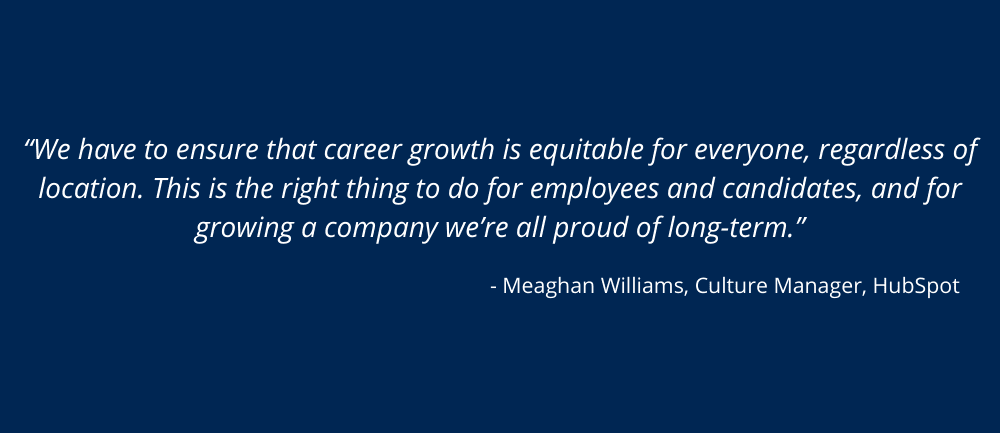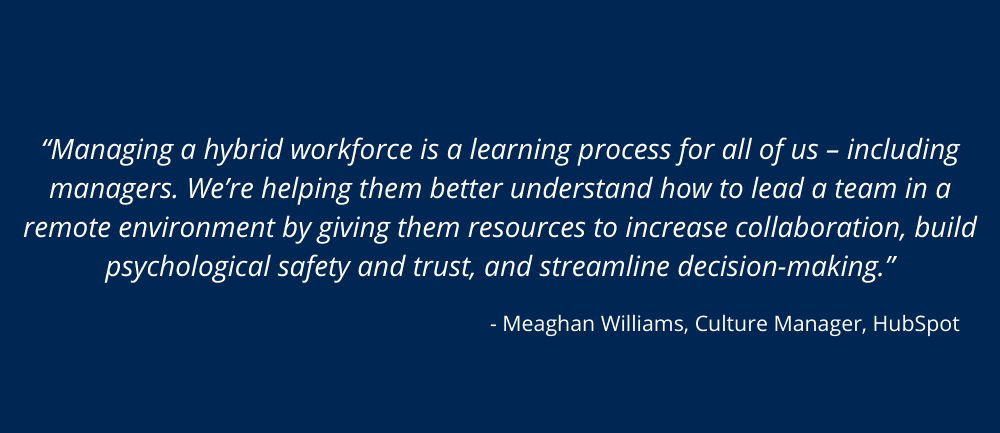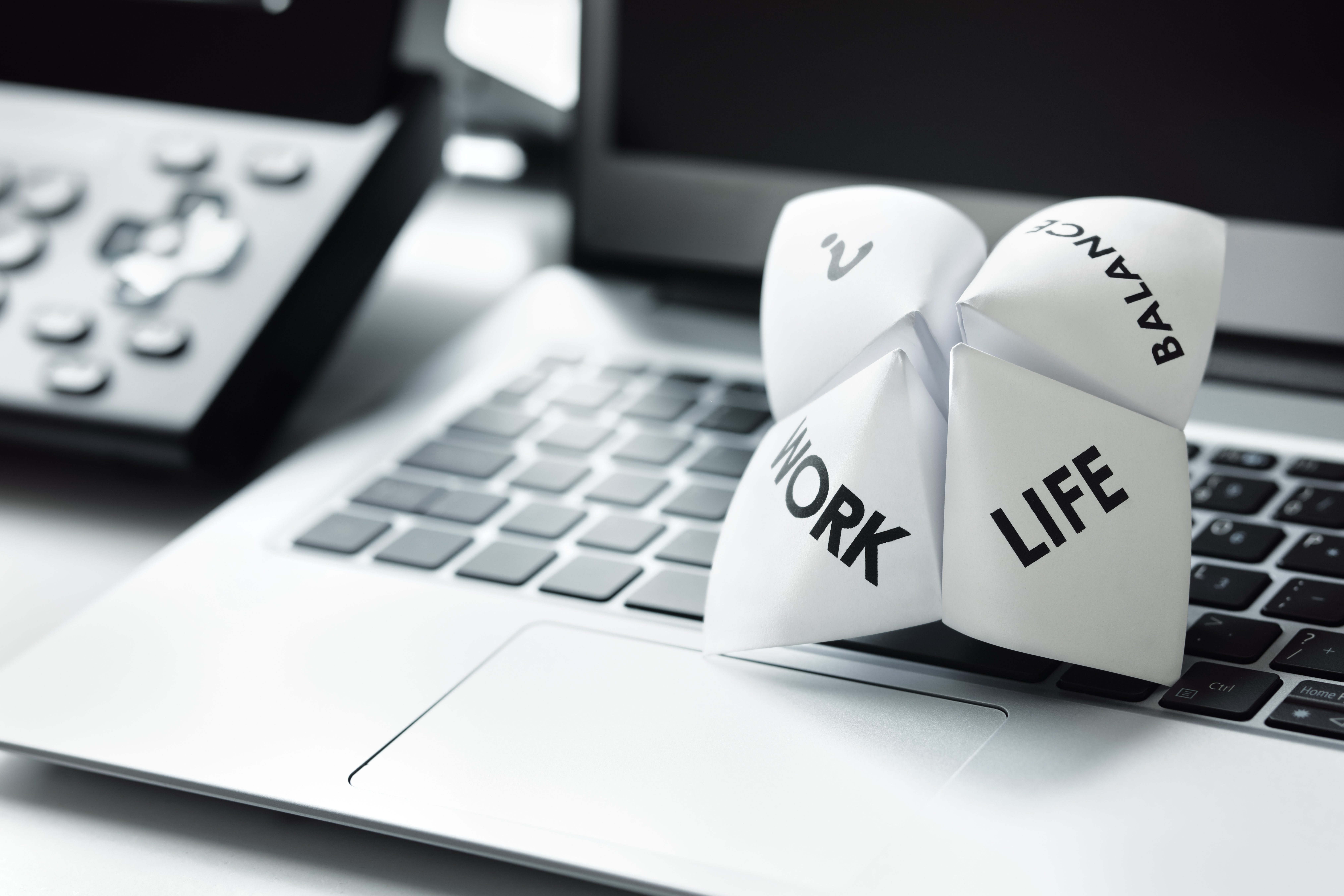-
Provided by

- Date published: Dec 2, 2021
- Categories
With annual revenues of $883 million (£661 million) HubSpot is the world’s biggest customer relationship management (CRM) specialist. The Massachusetts-headquartered company, which announced the opening of its first London office earlier in 2021, has won several awards for its employee culture, including Glassdoor’s ‘#1 place to work’ accolade for 2019.
In the wake of Covid-19, HubSpot has adopted a flexible working model in line with the wishes of its employees. This approach is hardly unique, but what really sets the company apart is the effort it has made to reboot its culture; the entire work structure has been completely recalibrated for flexible working, with the goal of ensuring that every employee enjoys equal opportunities, whether they’re working at home or in the office.
Here Meaghan Williams, HubSpot’s culture manager, explains how HubSpot has transformed its approach, going beyond perks and policies to create something genuinely future-proof.
“True remote inclusion doesn’t mean everyone having the same experiences at the exact same time,” says Meaghan Williams. “It’s not about cutting and pasting the office experience into a remote world either.
“For us, it’s about creating new traditions and norms and ensuring that our culture isn’t limited to a location. [Our goal is to ensure that] you won’t need to come to a HubSpot office to experience culture.”
It’s an ambitious goal: to create an environment in which everyone enjoys the same privileges, opportunities and responsibilities, whichever workplace path they go down. Their goal is to implement a set of tools and values that allow colleagues to work anywhere, whether it be remote or in the office.
Essentially, HubSpot is rebuilding its working policies from scratch. It’s a daunting, but fascinating challenge.
Change and flexibility
One might expect HubSpot to be fully committed to remote work. As a founding member of today’s CRM market, it is at the tip of the digital arrowhead, part of an elite band of companies shaping the fourth industrial revolution. Even before Covid-19, 10% of its employees were telecommuting; staff were encouraged to take unlimited holidays and juggle their working hours around personal commitments.
However the company has decided not to implement remote working for all staff. Meaghan and her fellow people leaders believe the benefits of the office – the sense of community and belonging, the structure it offers certain colleagues, the capacity for huddles and face-to-face planning – need to be maintained. HubSpot has long operated a ‘no-door’ policy, whereby any employee can have access to any other. By creating rigid diktats about work locations, the HR leads fear they may undermine this policy.
“There have been a lot of platitudes about the future of work,” Meaghan says. “Companies are going all in on remote and saying the office is dead. However, our main focus is on allowing people to do their best work. Today, that means working remotely for many people. And it means in an office for others.”

Drawing on employee surveys as well as panel discussions that sought the opinions of select samples, the HR leads have created three distinct ways of working. Each employee can choose the method that suits them best, and update it if their circumstances change.
- Office-based. Employees come into a HubSpot office three or more days per week. When they arrive they get a dedicated desk for laptop, monitor, family photos, plants and anything else they need to create a welcoming office environment. This stream will not receive at-home desk set-up, although they have the option to take their laptop home.
- Home-based. These team members work the majority of their time at home in a HubSpot-approved space. HubSpot makes sure the WiFi is optimised.
- Flex. This group comes to a HubSpot office two days a week or less. They will be given WFH set-up and receive a ‘hotel desk’, grouped together with their team where possible, when they attend the office.
When staff were invited to choose their preference of these three options, the responses vindicated the decision to adopt such a multi-faceted approach. 39 percent said they preferred to work from home for the duration of 2021, with 18 percent choosing the office and 43 percent selecting the ‘flex’ option. A fairly broad mix, reflecting the belief that one size does not fit all – even for a tech company.
Building something new
However, this flexibility carries its challenges. During the pandemic many employers, and employees, have highlighted the disparities that flexible working can create; office-based colleagues often enjoy better technology, greater communication with colleagues and healthier long-term opportunities. Earlier this year, the CIPD warned of creating a two-tier workforce, highlighting research that drew attention to a series of flexible working ‘notspots’ across the UK.
This is something HubSpot is desperate to avoid. Rather than simply upgrading their working practices, bolting on certain policies that are favourable to remote workers, they want to build something completely new, a culture which is both neutral and responsive.

On the most basic level, this means putting concrete policies in place. For example HubSpot is striving to ensure that 70 percent of its new job postings are location-agnostic, and the vast majority of jobs are posted with all three location options available. At the same time, the company has removed all office-based perks for both 2021 and 2022; in HubSpot’s new normal, presenteeism is very much discouraged.
But the new agenda goes way beyond rules and tick-boxes. To create a truly hybrid-centric culture, Meaghan and her team want to educate their people. In fact, they are striving to educate every single person in the company on what the new culture means.
As well as onboarding new team members, the people leads want to reboard existing colleagues, particularly managerial staff. People managers and team leads are receiving dedicated training and workshops on key themes for hybrid working, such as inclusive hiring and psychological safety. They will also be given specific training on how to tackle proximity bias, backed up by key recommendations – such as opting to dial in remotely, rather than from the office, when other team members are doing the same.

Technology and learning for the future
Much of the learning focuses on technology. HubSpot has amassed a vast suite of digital tools including Zoom, Gmail, Slack, Loom (a video messaging system) and Confluence, a web-based wiki developed by Australian company Atlassian. The company has even trialled a virtual-reality platform that enabled participants to build an avatar, walk around the virtual space, and even hear their voices and connect in real time as if they were in the office.
But how should each piece of technology be used? How can HubSpot adapt each individual tool to ensure it is fair to all colleagues, regardless of their location? The HR team have spent hours poring over these questions, working out a roadmap that they can share with their people.
“Communication is key when you’re on a co-located team,” Meaghan says. “But when you are new, and especially when you’re remote, it’s incredibly hard to figure out what to use when. So our L&D, IT, and Internal Comms teams are joining forces to help people understand how to use each technology in a way that is thoughtful and inclusive.”
These education programmes will serve to embed big-picture principles, like the need to prioritise each piece of technology, finding the tools for each situation, and deliver intentional communication, thinking clearly about the message they want to convey with each contact.
At the same time, the programmes will allow the training leaders to encourage nuts-and-bolts practices, like adding time zones to Slack profiles and using the ‘Remote Brains Trust’ channel to share tips and pain points.

In parallel with this focus on existing staff, the HR leads want to create a better learning experience for new starters – wherever they are joining from.
Meaghan and her colleagues are striving to increase the percentage of work that can be done asynchronously, so new hires can work through material at their own time during open windows rather than having to be in the classroom together at all times. And they want to create a more inclusive, compassionate approach, in which every new starter can get the most out of their learning.
In pursuit of this latter goal, the new hire training team is moving away from big onboarding groups. They want to shift the focus towards smaller hubs, with more facilitators, so everyone feels heard and welcome and there’s plenty of time to ask questions.
Promoting wellbeing and avoiding burnout
This wraps into HubSpot’s wider focus on wellbeing, particularly the issue of burnout, which continues to cause major problems for the global business community as lockdowns drag on and travel opportunities remain limited.
HubSpot’s strategy for tackling is headlined HubSpot Unplugged. Again, it is designed to ensure that every employee is given the necessary protection – no matter where they work, and whether they actively seek help or not.
In 2020 HubSpot created regional rest days, dedicated days off work based on the unique needs of each employee across the company’s 10 global offices. In 2021, this was expanded to create a Global Week of Rest; between July 5 and 9, HubSpot gave all staff a company holiday week, allowing them to take time off and recharge at a time when many regions were still grappling with local lockdown measures.
To augment this policy, the people leads have established no Internal Meeting Fridays. To help combat Zoom fatigue and restore that treasured ‘Friday feeling’, team members have been actively discouraged from booking meetings. Instead, they are invited to use the time for deep work or set up their agendas for the following week, so they can hit the ground running.
Finally, the people leads have driven an increase in mental health awareness programming. New programmes have been added for employees to listen, learn and identify ways to prioritise their mental health at work.

Now, in the second phase of this approach, HubSpot has rolled out a framework called the 5 Rs:
- Rest: Introducing an Annual Global Week of Rest
- Recharge: Having ‘No Internal Meeting Fridays’
- Reboard: Supporting Managers With Focused Resources
- Resilience: Offering a Workshop Around Sustainable Performance
- Root Cause: Solving for the Long Term with Workforce Planning and Resourcing
“Fixing burnout isn’t just checking a box,” Meaghan says. “There needs to be ongoing preventative measures on battling it and the 5 Rs framework includes a mix of short term and long-term thinking and action.”
Like many companies, HubSpot is still in the nascent stages of its post-Covid approach. It will take time for the results to trickle down. But the early signs are encouraging. Aside from its impressive financial performance, the company continues to collect excellent feedback from its own employees. The 1,894 reviews posted on Glassdoor reveal an overall approval rating of 4.7 percent, with 93 percent of respondents saying they would recommend the company to a friend.
These glowing reviews, in turn, will translate into better performance and an even stronger company culture. HubSpot is particularly big on values – its founder, Dharmesh Shah, has published a huge culture book which emphasises the need to maintain these values at all times.
By rebuilding its entire culture to suit the post-pandemic reality, HubSpot believes its people will continue to act as ambassadors for the brand, no matter the turbulence that the next few months has in store.
